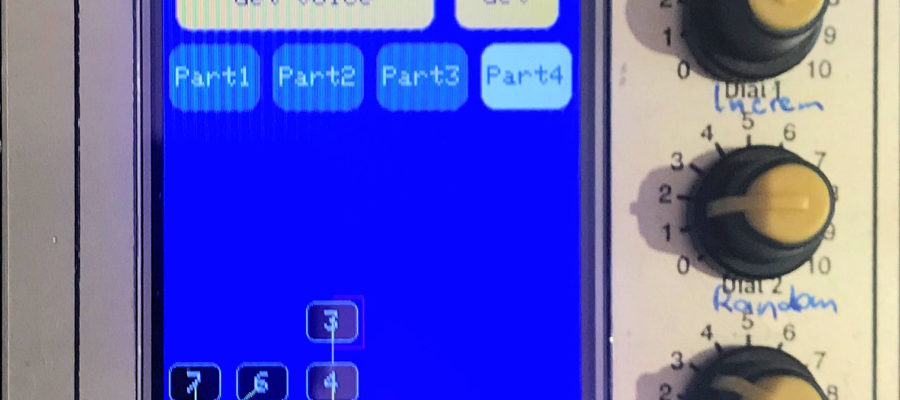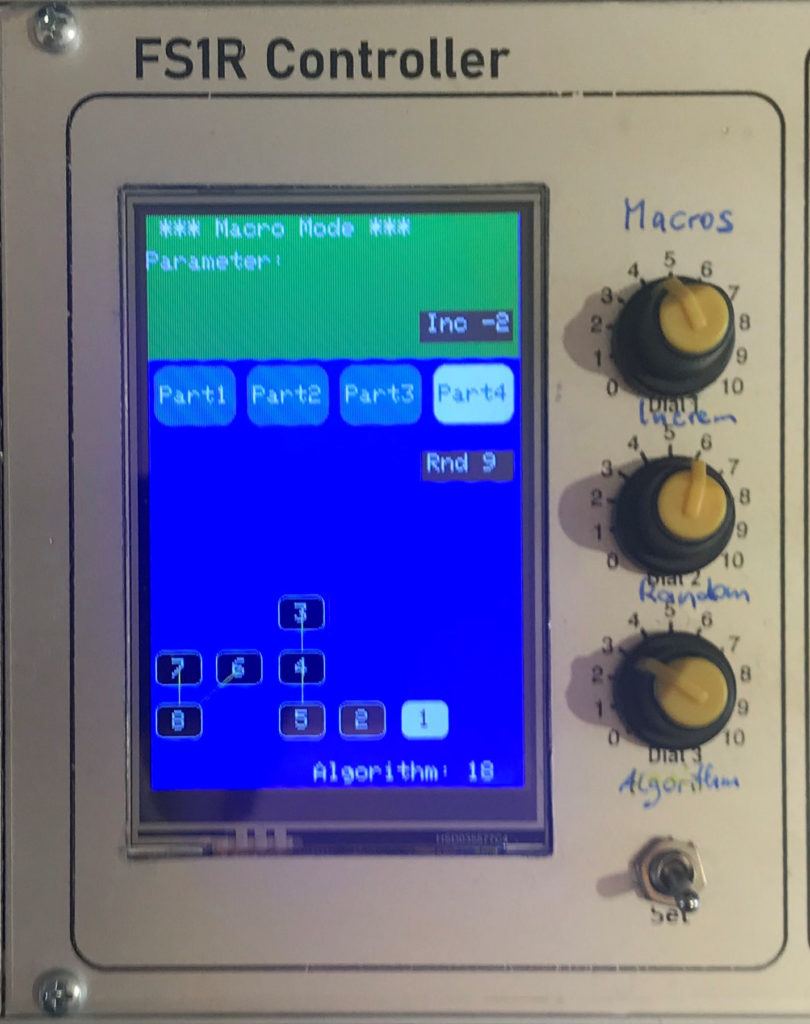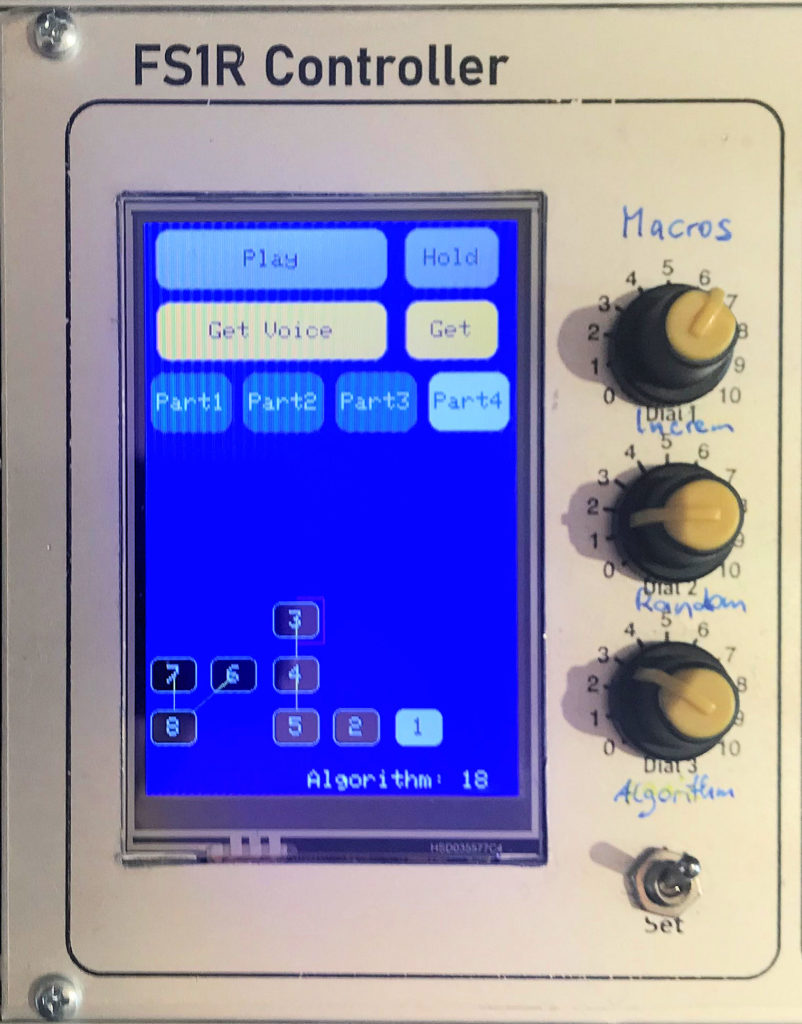Parts: The FS1R is multitimbral and supports 4 parts. These are controlled here with a small mixer: each part has control over mute, volume, balance and transpose.
The knobs on these panel also used to focus on the current part. If you move Vol1, Bal1 or Transp1 then the focus of the controller turns to Part 1, as if you had press the Part1 button on the touch display.
You can disable this automatism by setting the PartMode switch in the Voiced Op panel to fixed.

The touch display
shows the current active part, which can be changed by tapping the part number. Also using any of the mixer dials changes to the current part.
Touching Play and Hold sends a MIDI note to the FS1R. display, which you can change with the lowest button.
GetVoice requests a SYSEX dump of the major parameters, but not all. Get request 8 operator parameters of the current parameter scope.
On the bottom is the current algorithm, selectable by the 3rd yellow dial. You can touch any of the Operator numbers to select them and set the scope of all Operator buttons to this number.
Macro Functionality
Two plain but mighty Macro Knobs: Switched to the macro view, they can change a single parameter of all operators at the same time! They are not only copied to the other operators. The first knob sets the increments (-8 .. +7), starting from the selected operator, upwards or downwards. E.g, within a single turn, you could change all coarse tunings to 0,2,4,6,8,10,12.
The second button adds a random number to the current value of each operator individually. This works for almost all meaningful parameters, like volumes, envelopes etc. Each change of its position generates a series of new random numbers, depending on the position of the knob. Turning to zero decreases the ranomisation effect back to the original state. This makes additive synthesis a breeze.
Another trick: the sequence of modified operators is dependent on the selected operator:
if OP1 is selected -> then OP 2..8 are affected
If OP2 -> OP 3..8
If OP3 -> OP 4..8
IF OP4-> OP 5..8
If OP 5-> OP 4..1 (downwards!)
If Op6 -> OP 5..1
If Op7 -> OP 6..1
If Op8 -> OP 7..1


